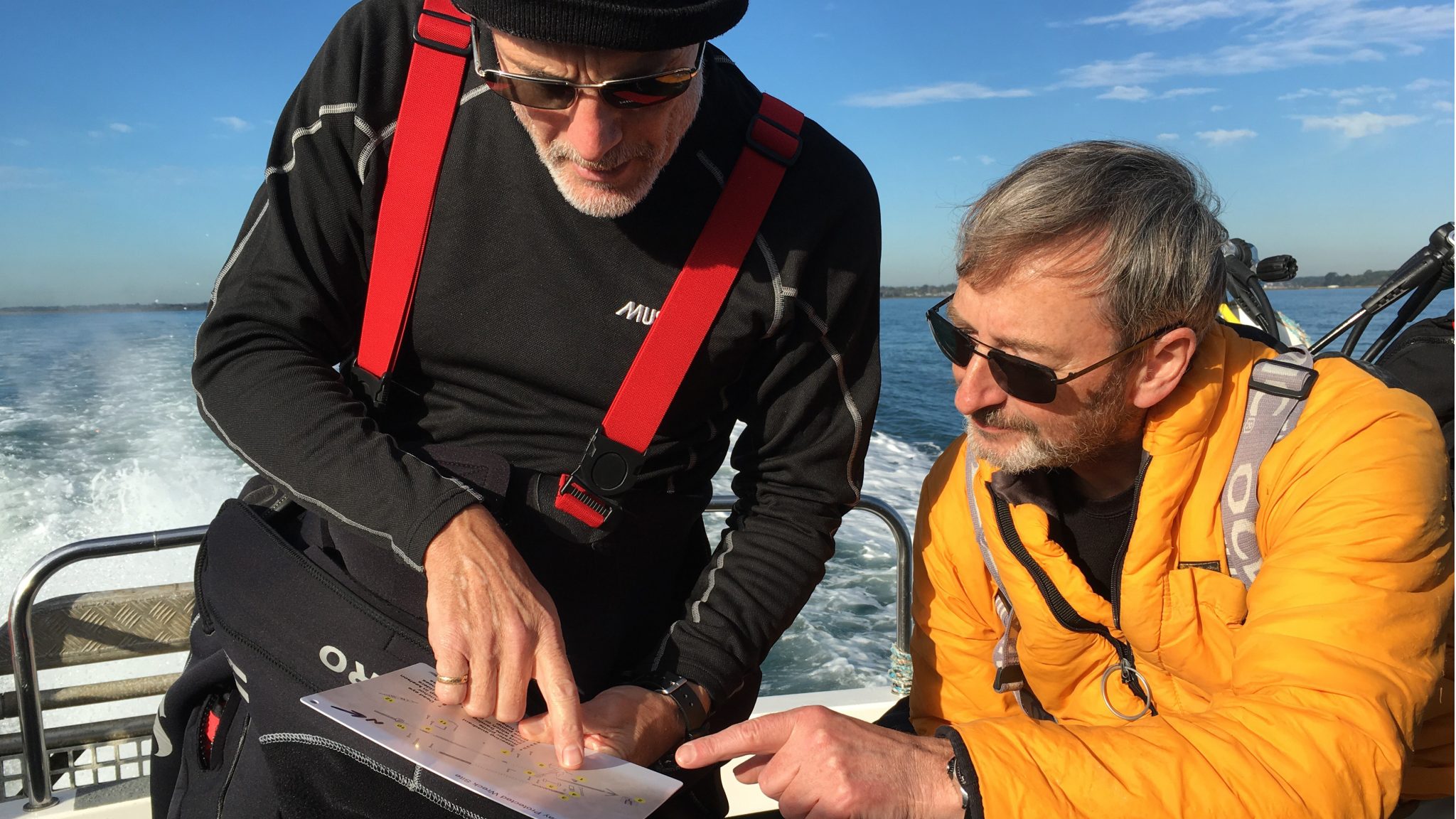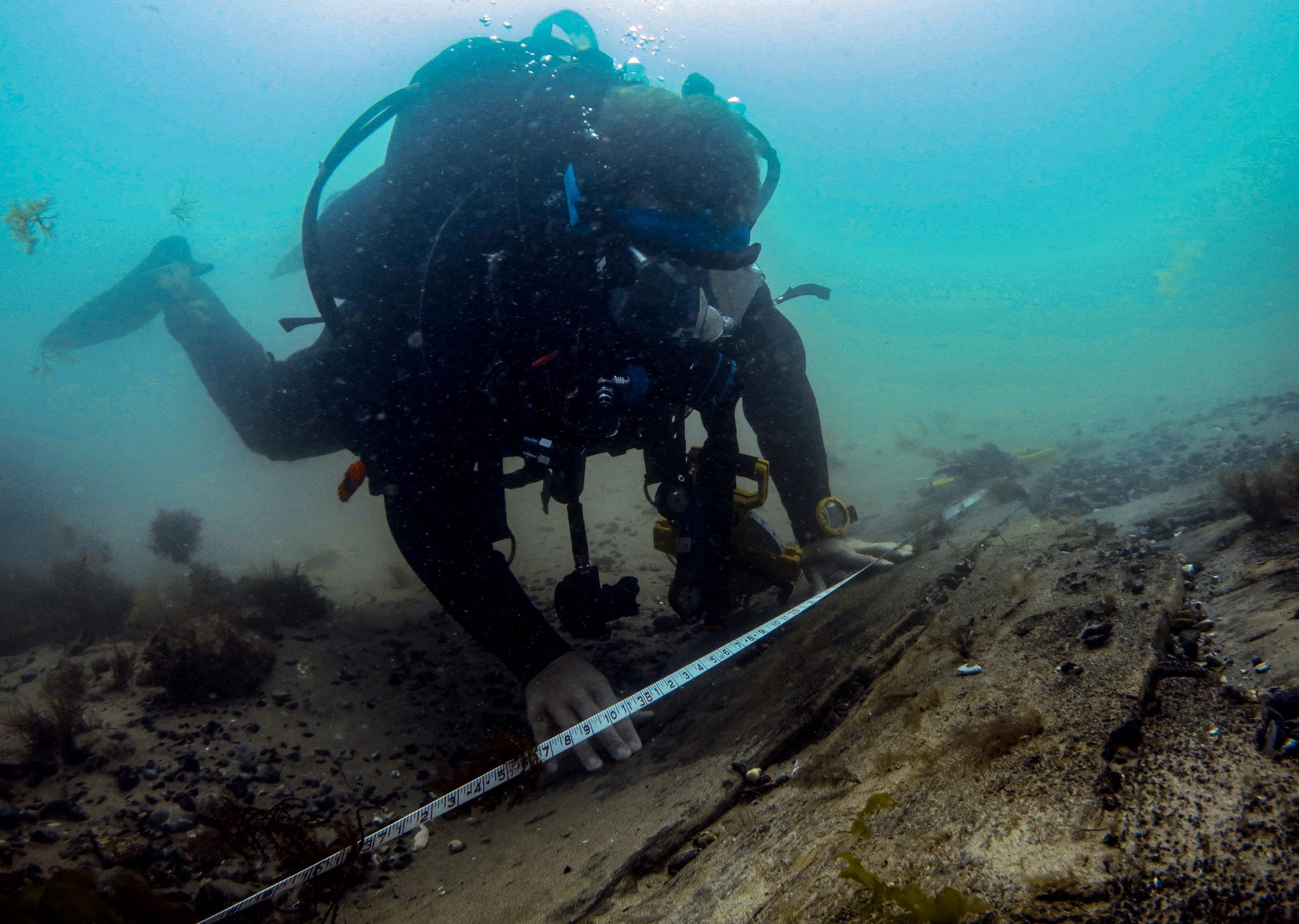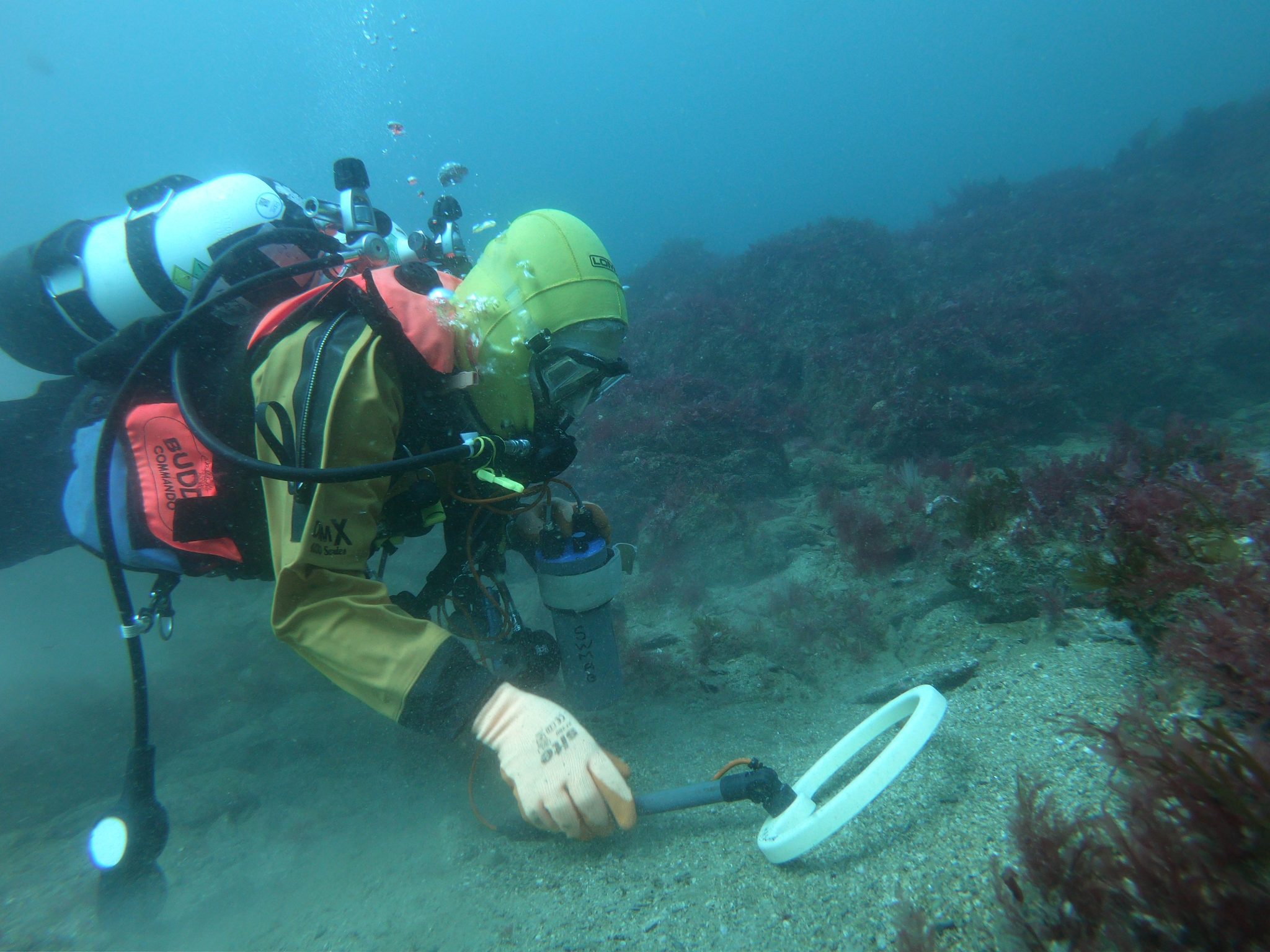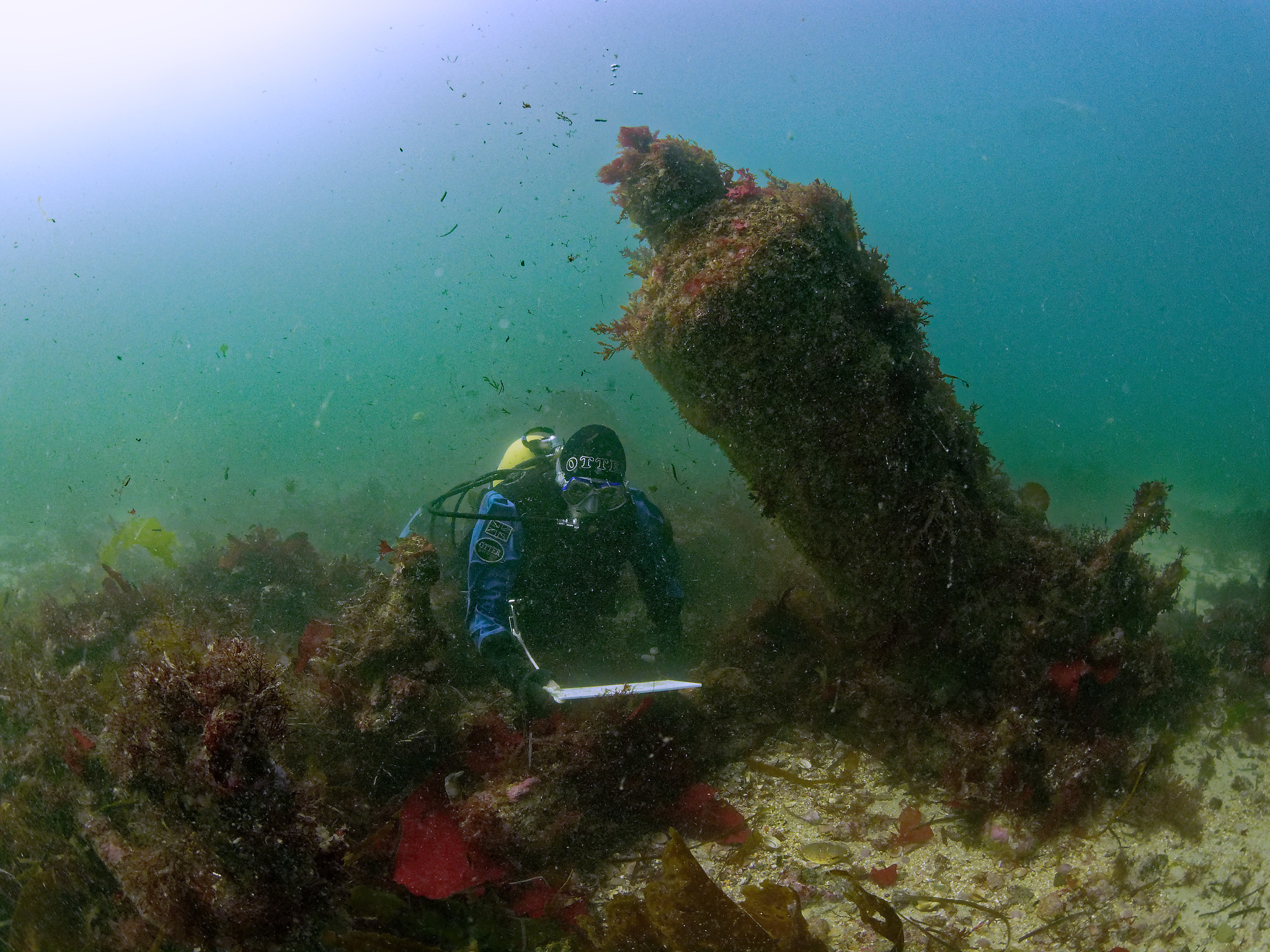News
Volunteer Divers make huge contribution to Marine Historic Environment

In the 50th year of the Protection of Wrecks Act 1973 a new survey by the Protected Wreck Association reveals the huge contribution volunteer divers make to the marine historic environment.
- 2023 is the 50th anniversary of the Protected Wreck Act 1973 and represents 50 years of divers acting as voluntary custodians on nationally and internationally significant wreck sites
- A new survey undertaken by the Association reveals in 2022 alone divers volunteered over 1,312 days working on protected wreck sites
- Volunteers contributed nearly £80,000 in 2022 to support the management of protected wreck sites
- The average volunteer is now over the age of 66 and new divers are urgently needed
Fifty years ago this year, a small piece of legislation was enacted that established, for the first time, the opportunity for Government to protect important historic shipwreck sites. There are currently 64 protected wreck sites across the UK designated under the Protection of Wrecks Act 1973, which is administered by DCMS and the Heritage Agencies. The Protection of Wreck Act 1973 enables the Secretary of State to designate a restricted area around a wreck to prevent uncontrolled interference. Shipwrecks can be designated under Section 1 of the Act on account of their historical, archaeological or artistic importance. The Act was introduced to address issues with the exploration and investigation of historic shipwrecks in the early 1970s that were damaging marine heritage and causing public outcry.
Licensing by the Heritage Agencies utilises volunteer divers as effective voluntary site custodians providing the eyes on the seabed to monitor, research and protect the wrecks. Some divers have been investigating sites over many decades; some 46% have been involved with the sites for fifteen years or more. The skills needed for investigating and caring for an important historic wreck site are broad and volunteers acquire a high level of responsibility, as they are ultimately responsible to DCMS. The volunteers work tirelessly on the protected sites, mainly funding their investigations themselves, to help bring these wrecks alive for the public on dry land for everybody’s benefit.
They are a unique breed of diver: focused, enthusiastic, committed and dedicated.
The role of the volunteer Licensee has played an essential vital part in the ongoing management of sites designated under the Act. In recent years there have been over 200 Licensees and team members active on England’s Protected Wreck sites, with more working elsewhere in the UK.
The Protected Wreck Association have undertaken a survey of its members to try and find out more about their volunteering. The survey has revealed that in 2022 alone, divers volunteered over 1,312 days to diving on, researching and engaging the public with protected wreck sites.
During their volunteering, they personally contributed nearly £80,000 to the management of protected wreck sites; this includes paying for boat time and fuel, purchase of survey equipment and travel to archives for research. 23% of survey participants are seeing a negative impact on their volunteering due to the cost-of-living crisis, with a further 40% anticipating it will have an impact in the near future.
The survey provides a snapshot of the value of the contribution of volunteers in just one year. It should be highlighted that the survey respondents represent only a small number of those who volunteer their time in such a way and the true figure is likely to be much higher. It can therefore be concluded that the value of 50 years of volunteering is highly significant and has helped underpin management of the UK’s most important maritime heritage throughout that time.
The work of Protected Wreck Association members helps reduce the number of historic wreck sites that are at risk and help heritage agencies, including Historic England and Cadw, in the management of these sites that are protected under the Protection of Wrecks Act 1973 or scheduled under the Ancient Monuments and Archaeological Areas Act 1979.
Professor Mike Williams, Chair of the Protected Wreck Association said: “Licensed diving teams are the unsung heroes of the UK’s underwater cultural heritage. Without fanfare, year after year, they go out investigating, recording and safeguarding the public’s maritime heritage. They are the embodiment of the adage ‘Take what you need, give more than you take.”
In England, Historic England recognise the huge contribution made by volunteer licensed divers in helping them to manage nationally significant wreck sites, such as the London that exploded and sank in the Thames estuary in 1665 and the Bronze Age and 17th Century sites in Salcombe, by classing them as affiliated volunteers
Hefin Meara, Marine Archaeologist at Historic England said: “The efforts of the protected wreck licensees are invaluable for the investigation and monitoring of these nationally important shipwreck sites. The results of the survey emphasise the significant contribution made by avocational divers to the care of our underwater cultural heritage. We look forward to continue our collaboration with the Protected Wreck Association, in order to support the vital projects undertaken by the Licensees”.
News
Book Review: Fire on Monroe Bravo by Fred Lockwood

Fire on Monroe Bravo is the latest book in the Jack Collier series by Fred Lockwood. Our story begins with our lead characters, Jack and Sandro, owners of Marine Salvage & Investigation Company, arriving on the Monroe Bravo Oil & Gas Platform in the North Sea. Having secured a contract for their vessel the MV Stavanger to act as support ship to the platform for TransGlobal Oil, our protagonists are on a celebratory visit.
However almost as soon as they arrive a series of explosions rock the platform, causing huge damage, loss of life and the very real danger of a massive human, ecological and financial disaster.

As the danger mounts for both our heroes and the surviving workers, Jack and Sandro will have to escape the inferno, all while trying to save the platform and the men still trapped unable to help themselves.
The disaster sets the scene for the unfolding story lines following the fate of the platform and our main characters, the police investigation into a suspected terrorist act and the actions of TransGlobal Oil as they attempt to navigate the pubic outcry and financial repercussions.
In his eighth book, Fire on Monroe Bravo, Fred Lockwood delivers an explosive thriller, with plenty of above and in-water drama, and our heroes fighting for survival, what more can you ask for?
We thoroughly recommend this read and look forward to the next in the series. For more information about his book series, you can check out the reviews of his previous books here on Scubaverse.
- Title: Fire On Monroe Bravo
- Author: Fred Lockwood
- ISBN: 979-8325324536
Available in a paperback version and for Kindle from Amazon and book stores.
Blogs
Alonissos: The complete diving destination (Part 1)

In June we were incredibly fortunate to be invited to dive in Alonissos, a small Greek Island in the Sporades island chain located in the North Aegean Sea. While I have long been a big fan of the Greek Islands as a great holiday destination, I had not had the opportunity to do any diving on previous visits and Mike and I were extremely excited to see what Alonissos had to offer both above and below the surface!

The Sporades are easily accessible via the airport in Skiathos (the first island in the chain), which is served by Jet2 flights from all major UK airports from May through October. Numerous ferries and charter boats make island hopping from Skiathos Town a breeze. After an hour boat ride, the picturesque port of Patitiri was a wonderful introduction to Alonissos, where we were met by our gracious hosts Kostas of Albedo Travel and Dias of Alonissos Triton Dive Center. Mike and I were delighted to be staying at the Paradise Hotel, aptly named for its stunning views over the sea and great location for walking to the waterfront.

Alonissos is beautifully situated in the National Marine Park of Alonissos and the Northern Sporades, the largest marine protected area in Europe. The surrounding seas offer fabulous marine life, including incredibly rare species such as the Mediterranean monk seal. They boast deep walls covered in gorgonians and sponges, stunning topography with caverns, swimthroughs and pinnacles, and the first accessible ancient shipwreck from 500BC!

In locations where historical sites have been reported, the waters are largely restricted, but with collaboration between government, underwater archeologists and dive centres, incredible underwater museums are being created for a truly unique diving experience. Alonissos is home to the first of these, the Ancient Shipwreck of Peristera Accessible Underwater Archeological Site. The chance to dive into history (along with reports of healthy reef life and amazing underwater topography) meant Mike and I were keen to get in the water.

Our introduction to the diving around Alonissos was at the Agios Georgios Pinnacles, in the channel between Alonissos and Skopelos. This fantastic site was named “The Chimney,’ and proved to have a huge amount to see. We got to a decent depth here (over 25m), and marvelled at a colourful reef wall with a wonderful swim through whose rocky walls were absolutely covered with life. As well as brilliant topography there was no shortage of macro life here. We saw numerous nudibranchs, five different species in total. The second dive at Mourtias reef nearby was a shallower dive along a nice wall with lots of crevices. Several moray eels and grouper called this site home. We enjoyed looking in the crevices for lobster and smaller benthic life, such as cup corals and tunicates.

Our itinerary allowed us two dives a day with afternoons left to explore the island with our hire car and evenings to enjoy the famous Greek hospitality. This proved to be a lovely mix of in-water and land based diversions.

The next days diving to the Gorgonian Gardens and Triton’s Cave was to be even better! These two stunning sites are nothing short of fabulous. The Gorgonian Gardens was a deep wall near to the Agios Georgios islands. The ever-present currents in this deep channel meant that the sea life was amazing … the namesake Gorgonian sea fans dotted the wall at a depth of 30 to 50 meters, getting ever larger the deeper we went. Above 30m was by no means less beautiful, with sponges, corals, scorpionfish, moray eels and some rare and colourful nudibranchs.

The second shallower dive of the day was to Triton’s Cave or the Cavern of Skopelos, on the east side of that island. The spectacular rock formations had wild striations both above and below the water making a truly epic topography. The cavern entrance was at 14m, and big enough for a buddy pair, winding up to 6m and passing two beautiful windows out into the blue. Emerging from the cavern, the light at the shallower depths and the incredible rock formations made for a fantastic gentle swimming safety stop and we all surfaced by the boat with massive grins.

Check out our next blog :Alonissos: The complete diving destination (Part 2)” to hear about our amazing dive on the 2500 year old Peristera Wreck!
Thanks to:
Alonissos Triton Dive Center https://bestdivingingreece.com/
Albedo Travel https://alonissosholidays.com/activities/
Paradise Hotel https://paradise-hotel.gr/
Alonissos Municipality https://alonissos.gr/en/
-

 Blogs2 months ago
Blogs2 months agoDiving With… Nico, Ocean Earth Travels, Indonesia
-

 News1 month ago
News1 month agoMurex Bangka Announce New Oceanfront Cottages & Beachfront Dining
-

 Blogs2 months ago
Blogs2 months agoA new idea in freediving from RAID
-

 Marine Life & Conservation1 month ago
Marine Life & Conservation1 month agoIceland issue millionaire whale hunter a licence to murder 128 vulnerable fin whales
-

 Marine Life & Conservation2 months ago
Marine Life & Conservation2 months agoThe Shark Trust Great Shark Snapshot is back
-

 News3 months ago
News3 months agoCharting New Waters; NovoScuba Goes Global with the Launch of their Revolutionary Dive Training Agency!
-

 Gear News1 month ago
Gear News1 month agoNew Suunto Ocean – a dive computer and GPS sports watch in one for adventures below and above the surface
-

 Marine Life & Conservation Blogs2 months ago
Marine Life & Conservation Blogs2 months agoBook Review: Plankton


















